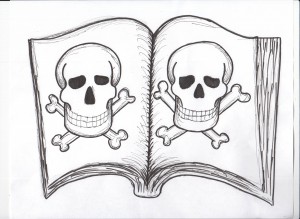
If you’re reading a piece of required literature for your English class, chances are at least one character isn’t going to make it to the back cover. In fact, it seems as though books are now required to include some discussion of mortality in order to make their way into classrooms. But does a book really have to include death and tragedy to appeal to a reader?
The short answer is no, not always. Contrary to what the writers of English class curricula apparently believe, maturity is not always synonymous with tragedy. A book doesn’t have to be relentlessly depressing to tell a good, thought-provoking story.
This isn’t to say that a story should be without conflict—that’s what makes it interesting in the first place—just that a terrible, upsetting ending isn’t always a necessity. Adult life and ideals are complex, and the literature that young adults are required to read should reflect this.
Some aspects of life are sad or difficult, and that’s where books like Night by Elie Wiesel and Of Mice and Men by John Steinbeck are necessary: to illustrate these facts by depicting heartbreaking losses or horrible events. But there are other aspects of maturity, such as identity or learning to overcome obstacles, that should be explored alongside the aforementioned themes. Books like Good Omens by Terry Pratchett and Neil Gaiman that deal with these additional ideas deserve just as much of a spot in school curriculum as darker books do.
This is not a call to completely overhaul the required literature list for English classes—far from it. Rather, this is a call to diversify the literature in order to better educate classes.
Many of the current books do teach important lessons and ideas to their readers, but young adults should be less worried about understanding death and loss and more focused on learning lessons that will help them better understand the world they will soon be living in. High school reading should teach students a variety of mature themes, not just the depressing ones.
